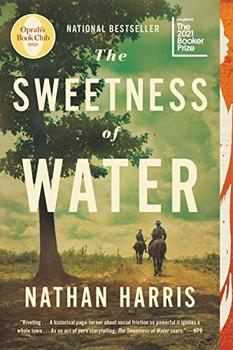Summary | Excerpt | Reading Guide | Reviews | Beyond the book | Read-Alikes | Genres & Themes | Author Bio

In her first novel,
Cane River (2000), Lalita Tademy explored her mother's
side of the family, inspired by the discovery of an 1850 bill of
sale in the public records of Louisiana that recorded the
purchase of her great-great-great-great-grandmother and seven
family members. Cane River was a huge success - an Oprah
book club choice that spent 17 weeks on the New York Times
bestseller list. Now, Lalita is back with a novel based on her
father's side of the family - a raw, visceral story plucked from
a time and place in history that has been all but forgotten.
Her story opens in 1873 during "the scary time" of
Reconstruction following the end of the American civil war. The
Tademy family and their neighbors are working with grit and
determination to make new, independent lives for themselves on
their own tiny holdings of flood-prone land outside of Colfax.
They dream of a better future for themselves and of starting a
school where their children can learn and in turn improve their
lives. They even dare to dream of changing the political
climate.
In November 1872 they assert their citizenship by voting for
their new sheriff. The result is close but in favor of the
Republican party candidate, a decision confirmed by the new
Republican Governor of Louisiana. A violent standoff ensues at
the courthouse triggered when the Democratic party try to
unlawfully take office causing about 150 Republican blacks to
occupy the courthouse in defense of the legitimate (white)
Republican sheriff while they wait for support from the federal
government. Weeks pass and no aid comes. The deadlock is broken
when members of the "White League" set fire to the courthouse
and massacre the majority of those inside as they try to escape
the burning building - some are shot down; others are captured,
tortured and hung; a handful escape.
In the second half of Red River Tademy creates a gripping
generational saga covering 60 years of her family's history up
until the 1930s, as they struggle against poverty, racial
attacks, and natural disasters to establish a school for their
children and secure lives for themselves. Some reviewers feel
that the author tries to pack too many characters into these
chapters but I found it fascinating and uplifting. As in
Cane River, Tademy populates her tale with archival material
from the period - letters, newspaper articles, photos of her
ancestors and of historical sites such as the extraordinarily
tactless historical marker that still stands outside the court
house in Colfax which reads, "On this site occurred the Colfax
Riot in which three white men and 150 negroes were slain. This
event on April 13, 1873, marked the end of carpetbag misrule in
the South."
BookBrowse spoke to 'Lita just before Christmas 2006. She was already gearing up for a grueling PR tour for Red River, but despite this she was gracious enough to take some time out to answer questions about herself and Red River - which you can read in full at BookBrowse.
![]() This review was originally published in The BookBrowse Review in January 2007, and has been updated for the
January 2008 edition.
Click here to go to this issue.
This review was originally published in The BookBrowse Review in January 2007, and has been updated for the
January 2008 edition.
Click here to go to this issue.

If you liked Red River, try these:

by Nathan Harris
Published 2022
A profound debut about the unlikely bond between two freedmen who are brothers and the Georgia farmer whose alliance will alter their lives, and his, forever.

by Lyndsay Faye
Published 2019
The new and exciting historical thriller by Lyndsay Faye, which follows Alice "Nobody" from Prohibition-era Harlem to Portland's the Paragon Hotel.
Your guide toexceptional books
BookBrowse seeks out and recommends the best in contemporary fiction and nonfiction—books that not only engage and entertain but also deepen our understanding of ourselves and the world around us.